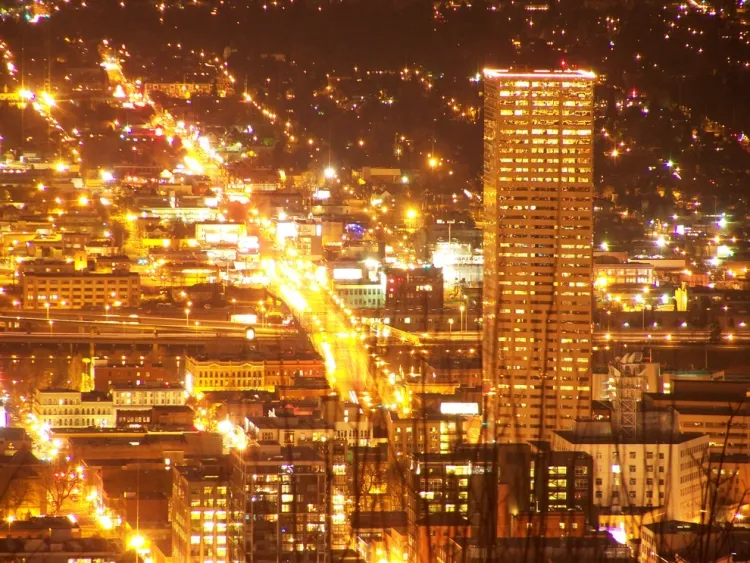The Multifaceted Essence of Urban Areas: Characteristics, Advantages, Challenges, and Solutions...!!!
Urban areas are dynamic and vibrant regions that play a crucial role in a country's development. While they offer numerous advantages, such as employment opportunities, access to services, and cultural activities, they also face challenges such as overcrowding, pollution, and social inequality.

Exploring the Dynamics of Urban Areas
Urban areas, also known as cities or metropolitan regions, are distinguished by their high population density, extensive infrastructure, and vibrant economic and cultural environments. These areas are pivotal in driving the development and progress of a nation. Let's explore the various facets of urban areas.
Characteristics of Urban Areas
Urban areas possess several defining attributes:
-
High Population Density: Urban regions are densely populated, with many people residing in a relatively compact geographic area. This population concentration necessitates the development of extensive infrastructure and services to meet residents' needs.
-
Infrastructure Development: Cities are characterized by well-developed infrastructure, including transportation systems, communication networks, healthcare facilities, educational institutions, and utilities such as water, electricity, and sanitation. This infrastructure is crucial for the smooth functioning of the city and the well-being of its inhabitants.
-
Economic Activity: Cities serve as economic hubs, hosting diverse industries, businesses, and services. Urban areas provide numerous employment opportunities and significantly contribute to the nation's economy. They attract investment and foster innovation and entrepreneurship.
-
Cultural and Social Diversity: Urban areas are melting pots of culture and diversity, with people from various backgrounds, ethnicities, and religions coexisting. This diversity enriches the social fabric of the city and fosters a vibrant cultural scene, including arts, music, theater, and cuisine.
-
Education and Healthcare: Urban areas house numerous educational institutions, ranging from primary schools to universities, offering a wide array of academic and vocational programs. Additionally, cities have advanced healthcare facilities, providing residents with access to specialized medical care and emergency services.
Advantages of Urban Living
Living in urban areas offers several benefits:
-
Employment Opportunities: Cities provide diverse job opportunities across various sectors, including technology, finance, healthcare, education, and entertainment. This diversity in employment options attracts people from different regions and backgrounds.
-
Access to Services: Urban residents have easy access to essential services, including healthcare, education, transportation, and utilities. The availability of these services enhances the quality of life and ensures that residents' needs are promptly met.
-
Cultural and Recreational Activities: Urban areas offer a plethora of cultural and recreational activities, such as museums, theaters, parks, restaurants, and shopping centers. These amenities provide residents with opportunities for leisure, entertainment, and personal growth.
-
Innovation and Development: Cities are often centers of innovation and development, with research institutions, startups, and established companies driving technological advancements and economic growth. This environment fosters creativity and provides opportunities for professional and personal development.
-
Social Interaction: The dense population of urban areas facilitates social interaction and networking, allowing residents to build diverse social connections and support systems. This social network can benefit both personal and professional growth.

Challenges of Urban Living
Despite its advantages, urban living presents several challenges:
-
Overcrowding: High population density in urban areas can lead to overcrowding, resulting in congested streets, crowded public transportation, and limited living space. This can affect the overall quality of life and increase stress levels.
-
Cost of Living: The cost of living in urban areas is generally higher compared to rural regions. Housing, food, transportation, and other essentials can be more expensive, making it challenging for some residents to afford a comfortable lifestyle.
-
Environmental Pollution: Urban areas often experience high pollution levels, including air, water, and noise pollution. This pollution can have adverse effects on residents' health and the environment.
-
Traffic Congestion: Heavy traffic congestion is a common issue in urban areas, leading to longer commute times and increased frustration among residents. This congestion can also contribute to air pollution and negatively impact the efficiency of transportation systems.
-
Social Inequality: Urban areas can exhibit significant social inequality, with disparities in income, access to services, and quality of life. This inequality can lead to social tension and create challenges for urban governance and development.
Efforts to Improve Urban Living
Various initiatives and programs have been implemented to address the challenges faced by urban areas:
-
Urban Planning and Development: Governments and urban planners work to develop sustainable and efficient urban infrastructure, including transportation systems, housing, and public spaces. These efforts aim to create livable and resilient cities.
-
Environmental Initiatives: Efforts to reduce pollution and promote environmental sustainability include adopting green technologies, waste management programs, and developing green spaces such as parks and gardens.
-
Affordable Housing Programs: Governments and organizations work to provide affordable housing options for residents, ensuring that everyone has access to safe and comfortable living conditions.
-
Public Transportation Improvements: Enhancing public transportation systems, including buses, trains, and subways, helps reduce traffic congestion and improve mobility for residents.
-
Social Programs and Services: Programs aimed at reducing social inequality and supporting vulnerable populations, such as healthcare, education, and social welfare services, help create more inclusive and equitable urban environments.
Urban areas are dynamic and vibrant regions that play a crucial role in a country's development. While they offer numerous advantages, such as employment opportunities, access to services, and cultural activities, they also face challenges such as overcrowding, pollution, and social inequality. By addressing these challenges through thoughtful urban planning and sustainable development, we can create urban environments that are both livable and resilient, ensuring a high quality of life for all residents.
What's Your Reaction?

















